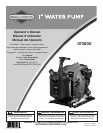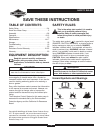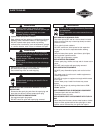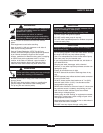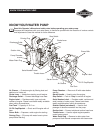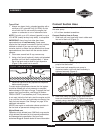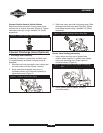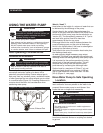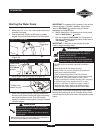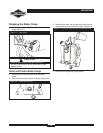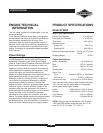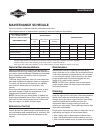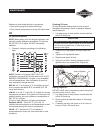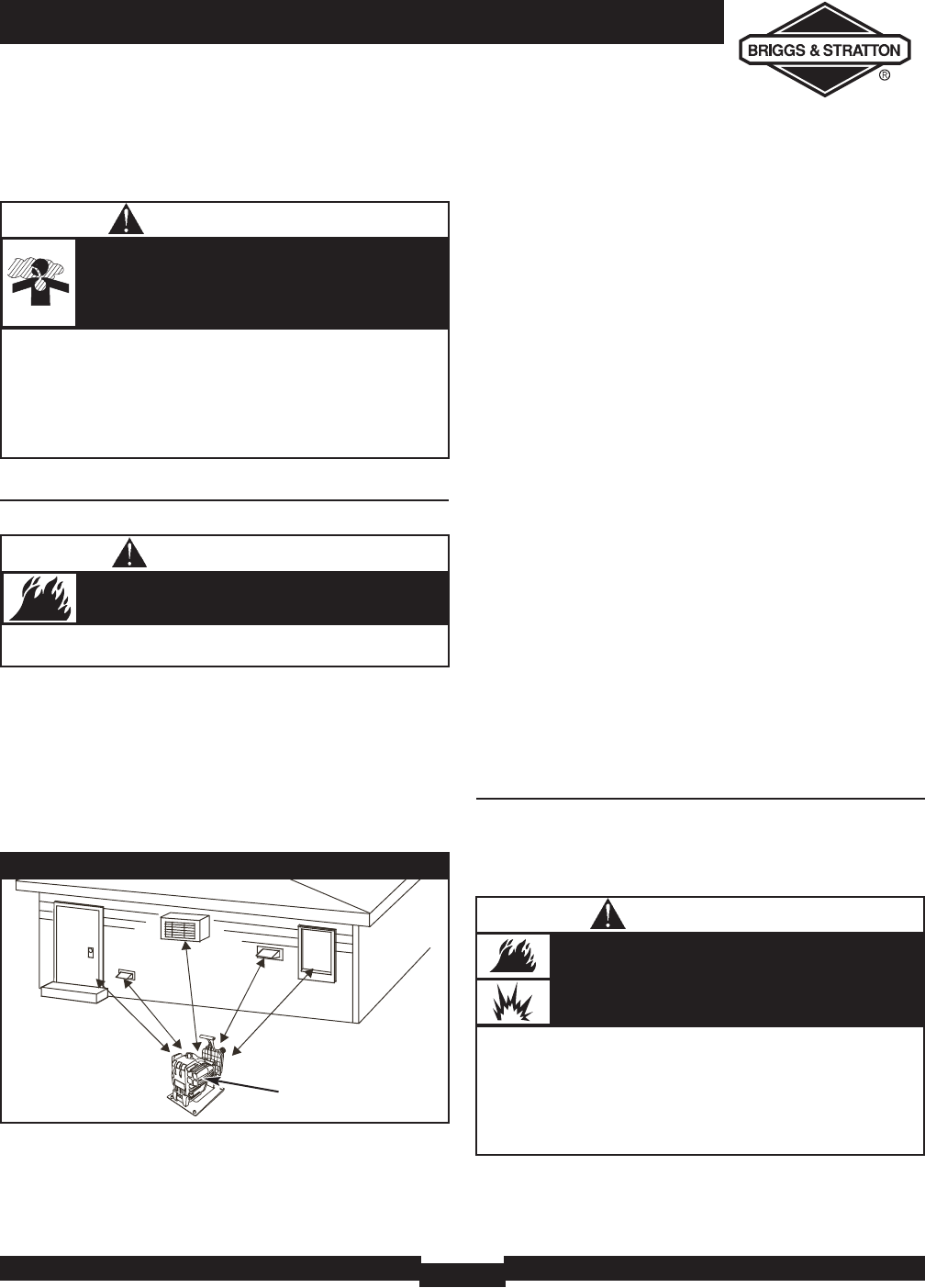
OPERATION
9
USING THE WATER PUMP
Safe Operating Considerations
Clearances and Air Movement
DO NOT place water pump where exhaust gas could
accumulate and enter inside or be drawn into a
potentially occupied building. Ensure exhaust gas is
kept away from any windows, doors, ventilation intakes
or other openings that can allow exhaust gas to collect
in a confined area (Figure 10). Prevailing winds and air
currents should be taken into consideration when
positioning water pump.
What is “Head”?
Head refers to the height of a column of water that can
be delivered by the discharge of the pump.
Suction Head is the vertical distance between the
center of the pump and the surface of the liquid on the
suction side of the pump (may also be referred to as
“suction lift”). The atmospheric pressure of 14.7 psi at
sea level limits suction head lift to less than
approximately 26 feet for any pump.
Discharge Head is the vertical distance between the
pump’s discharge port and the point of discharge,
which is the liquid surface if the hose is submerged or
pumping into the bottom of a tank.
Total Head is the sum of the suction head value plus
the discharge head value.
As water pumping height increases, pump output
decreases. The length, type, and size of the suction and
discharge hoses can also significantly affect pump output.
It is important for the suction operation to be the
shorter part of the total pumping action. This will
decrease the priming time and improve pump
performance by increasing the discharge head.
Suction head is a maximum of 23 feet (7 m) and
discharge head should be a maximum of 92 feet
(28 m). Total head can not be more than 115 feet
(35 m) (Figure 11, next page).
Move Water Pump to Safe Operating
Location
For best pump performance, locate the pump on a flat,
level surface as close as possible to the water to be
pumped. Secure water pump to avoid tipover. Use
hoses that are no longer than necessary.
IMPORTANT: Direct open end of discharge hose away
from home, electrical devices or anything not desired
to get wet.
Figure 10 — Water Pump Clearance
Exhaust Port
WHEN OPERATING EQUIPMENT
• This water pump is not for use in mobile equipment or
marine applications.
• DO NOT tip engine or equipment at angle which causes
fuel to spill.
• Secure water pump. Loads from hoses may cause tipover.
Fuel and its vapors are extremely flammable
and explosive.
Fire or explosion can cause severe burns or
death.
WARNING
• Operate water pump ONLY outdoors.
• Keep exhaust gas from entering a confined area through
windows, doors, ventilation intakes or other openings.
• DO NOT operate water pump inside any building,
confined area or enclosure, such as basements, garages
or a similar location, even if doors or windows are open.
Running water pump gives off carbon
monoxide, an odorless, colorless, poison gas.
Breathing carbon monoxide may cause
nausea, fainting or death.
WARNING
• Keep at least 5 ft. (152 cm) clearance on all sides of
water pump including overhead.
Exhaust heat/gases can ignite combustibles,
structures or damage fuel tank causing a fire.
WARNING



